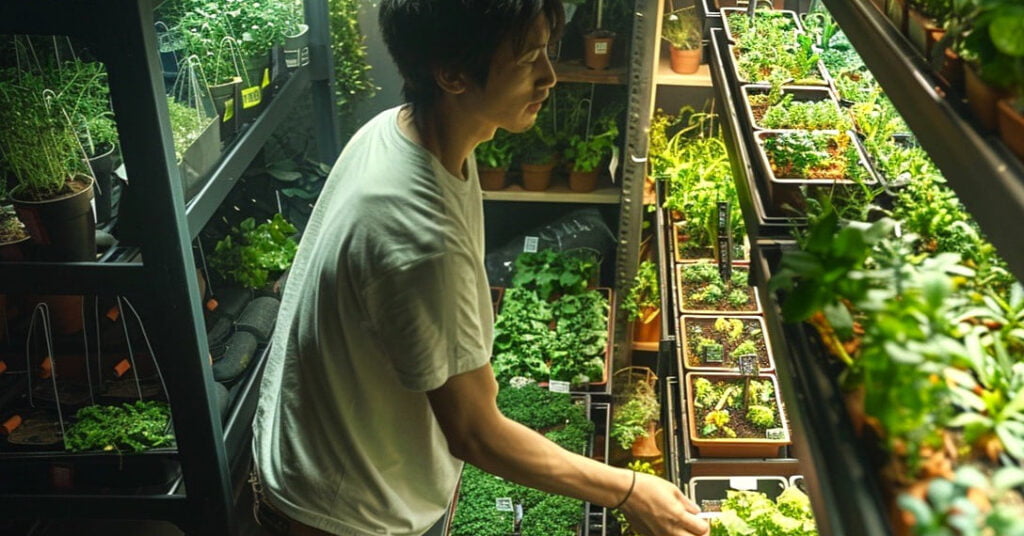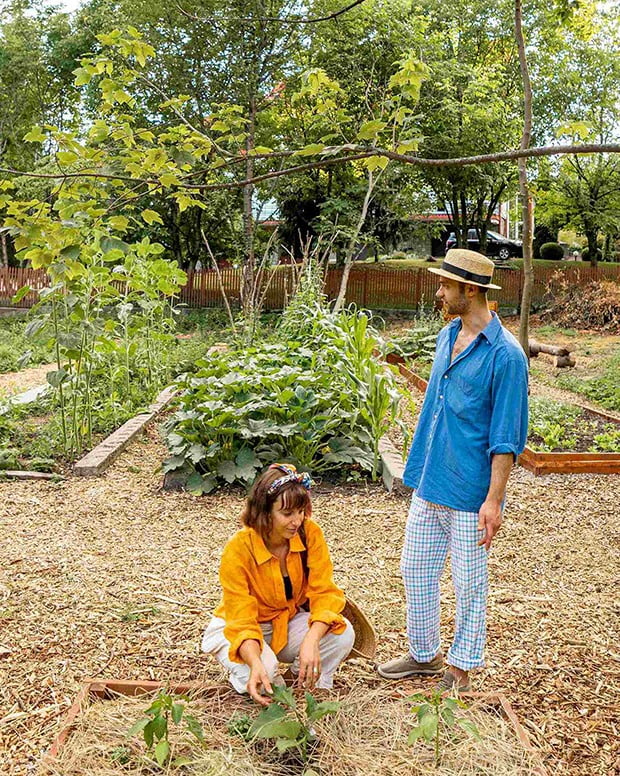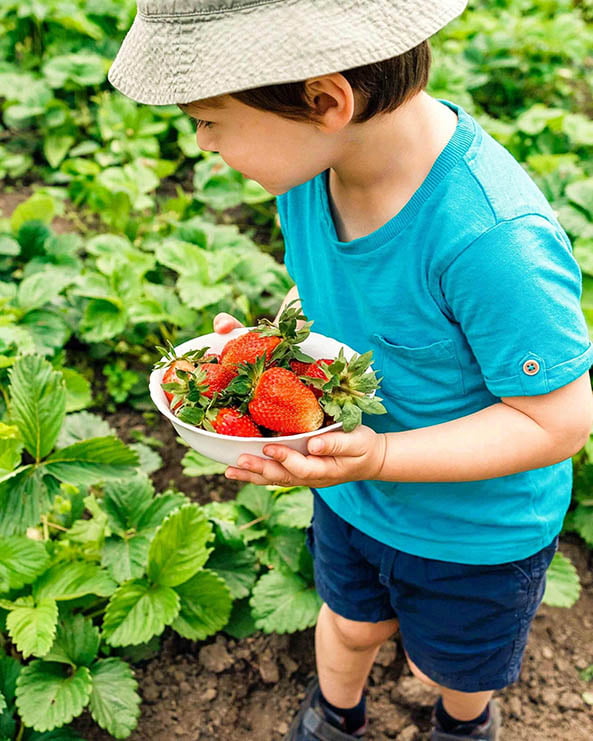Urban farming has become as thriving a trend across the United States as in any other urban city in the world, as people are becoming more and more concerned with sustainability and local food systems. Its a positive reality by turning concrete jungles balconies, porticos, and rooftops into lush environments that support both the environment and local residents.
Urban farming efforts are transforming cities by solving issues ranging from food insecurity to environmental sustainability. Let us examine the most recent developments in urban farming.
What is Urban Farming?

Urban agriculture, also known as urban farming, comprises the practice of growing plants and also raising animals within and around urban environments. This can take many forms, including:
- Community gardens: Shared plots of land where residents come together to cultivate vegetables, herbs, and flowers.
- Rooftop gardens: Green spaces established on top of buildings, utilizing previously unused areas for sustainable food production.
- Vertical farms: Indoor, stacked growing systems that maximize production in limited space, often employing hydroponics or aeroponics (growing plants without soil).
- Backyard gardens: Personal plots where homeowners cultivate fruits, vegetables, and herbs for their own consumption.
- Urban livestock: Small-scale raising of animals like chickens, rabbits, or even goats, within city limits (following local regulations).
Key Trends in Urban Farming
- Rooftop Farming: Cities like New York, Chicago, and Los Angeles are leading the way in rooftop farming. For example, Brooklyn Grange operates the world’s largest rooftop soil farms, spanning over 5 acres across multiple locations in New York City.
- Community Gardens: Community gardens provide valuable green spaces in urban areas while fostering a sense of community and self-sufficiency. The Beacon Food Forest in Seattle is a prime example, offering free access to fresh produce and educational programs for local residents.
- Indoor Farming with Artificial Light: With advancements in technology, indoor farming using artificial light has gained traction. Companies like Plenty and Aero-Farms utilize vertical farming techniques to grow crops efficiently in controlled environments, reducing water usage and transportation emissions.

- Urban Composting: Organic waste composting initiatives help divert landfills while enriching soil for urban agriculture. The NYC Compost Project, managed by the Department of Sanitation, collects food scraps and yard waste from residents and businesses, producing high-quality compost for community gardens and urban farms.
- Hydroponics and Aquaponics: Hydroponic and aquaponic systems enable year-round cultivation of crops without soil, using nutrient-rich water instead. Growing Underground in London is example of unique hydroponic farming in urban environments, repurposing abandoned tunnels to produce fresh greens for local markets.
Why is Urban Farming on the Rise?

The popularity of urban farming can be attributed to several key factors:
- Increased interest in local food: Growing awareness of food origins has led consumers to prefer fresh, locally farmed produce with lower carbon footprints.
- Environmental Sustainability: By minimizing transportation distances and utilizing sustainable farming practices, urban agriculture helps mitigate climate change and conserve natural resources.
- Organic Health: In contrast to commercially grown vegetables reliant on chemical fertilizers, urban farming prioritizes organic methods, pesticide-free food for a heathy lifestyle.
- Community building: By enabling neighbor’s to interact and partake in a common activity, communal agricultural initiatives and shared gardens promote a feeling of community among the locals.
- Improved food accessibility : Urban farms supports food deserts, areas with limited access to fresh fruits and vegetables, particularly in low-income neighborhoods.
- Economic opportunities: Urban agriculture creates jobs in production, distribution, and education, while potentially increasing property values in surrounding areas.
Partial Self-Sufficiency Through Urban Farming

Achieving complete self-sufficiency through sole urban farming might be challenging, especially in dense urban environments, but, it can significantly contribute to a household’s veggie intake. The level of self-sufficiency achievable depends on factors like available space, chosen crops, and growing techniques.
By strategically planning your urban farm (think vertical gardens for maximizing space) and focusing on high-yield crops, you can cultivate a steady supply of fresh produce throughout the growing season. Even a small balcony container garden bursting with herbs can significantly reduce your reliance on store-bought options.
How you can Get Involved in Urban Farming
Whether you have a spacious rooftop or a small balcony, there are ways for everyone to participate in urban agriculture.
- Start a backyard garden: Even a small plot can yield surprising amounts of fresh produce.
- Join a community garden: Connect with your neighbors and contribute to a shared space for growing food.
- Support local urban farms: Purchase produce from urban farmers’ markets or subscribe to a Community Supported Agriculture (CSA) program.
- Advocate for change: Support policies that encourage urban farming in your city.
- Volunteer your time: Many urban farms rely on volunteers to help with planting, harvesting, and maintenance tasks.
Sprouting Green Thumbs: Getting Kids Involved in Urban Farming
Teaching children where their food originates from isn’t the only
reason to involve them in urban farming. It’s an amazing chance to grow a respect for the environment, a good diet, and a sense of responsibility. From sowing seeds and witnessing them blossom to gathering their own vegetables, children get a feeling of achievement and a more profound understanding of the nourishment they consume. It’s an enjoyable, hands-on method to help kids form lifelong memories and link them to the environment. Various community programs and workshops are organized in this matter.
As urban populations continue to grow, the importance of urban farming as a sustainable solution cannot be overstated. By adopting scientific technologies, engaging in community partnerships, and advocating for supportive policies, cities across the USA can realize the full potential of urban agriculture in creating healthier, more vibrant urban environments.
THE BENEFITS OF 20th CENTURY SCIENCE, THE FRUITS WHICH ARE REAPED TODAY









Hi there,
I have reviewed your domain in MOZ and have observed that you may benefit from an increase in authority.
Our solution guarantees you a high-quality domain authority score within a period of three months. This will increase your organic visibility and strengthen your website authority, thus making it stronger against Google updates.
Check out our deals for more details.
https://www.monkeydigital.co/domain-authority-plan/
NEW: Ahrefs Domain Rating
https://www.monkeydigital.co/ahrefs-seo/
Thanks and regards
Mike Derrick